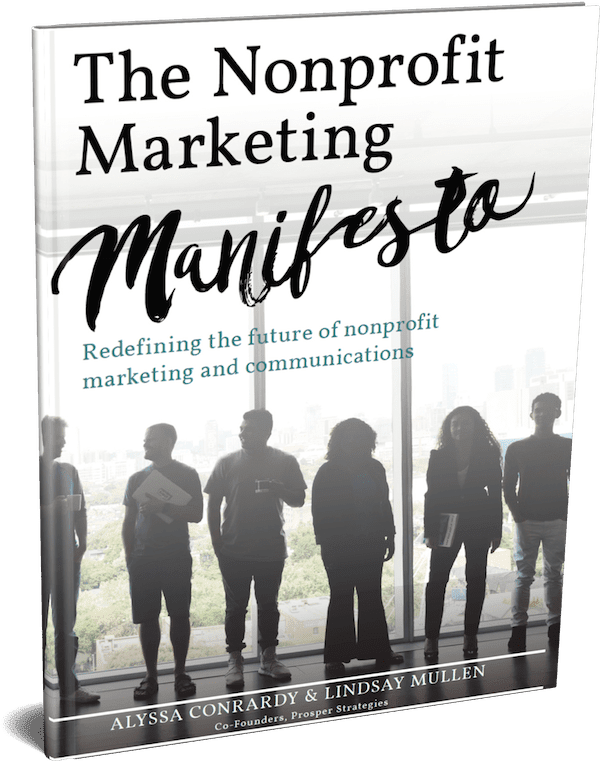If you’ve only ever understood marketing in the for-profit sense –– communications intended to sell a product or service –– it can be easy to think of marketing for nonprofits as strictly promotional as well. Many people, even those who have worked in the nonprofit space for their entire careers, think marketing only applies to fundraising or awareness-building campaigns.
But you’ve seen the light, and you know that marketing can do more than help you fundraise or raise awareness (though those are both important goals!). It’s a tool that can actually further your nonprofit’s impact because it comprises every touchpoint you have with your audiences, it encourages those audiences to take action, and it communicates the good work you’re doing to the world.
Marketing is every touchpoint you have with your stakeholders.
If you’re familiar with our blog, you’ve probably seen us talk about our new definition of nonprofit marketing before:
Nonprofit marketing [noun]
Nonprofit marketing comprises the activities, touchpoints and messages that motivate stakeholders to take actions that advance a nonprofit’s mission and create sustainable social change.
That means everything you put out into the world about your organization or every touchpoint through with your stakeholders engage with you –– from your social media posts, to walk-a-thon events, to your CEO’s quote in an article –– is marketing. Yes, your end-of-year fundraising campaign direct mail letters are marketing, and so is that job posting and that volunteer training deck.
Whether an organization achieves its goals, and eventually its mission, is decided by its stakeholders through each and every one of these touchpoints. And without a plan to ensure all of these communications are cohesive and directly tied to organizational goals, stakeholders will be left unsure of what to do and why they should do it.
[bctt tweet=”Everything you put out into the world about your organization or every touchpoint through with your stakeholders engage with you –– from your social media posts, to walk-a-thon events, to your CEO’s quote in an article –– is marketing.” username=”ProsperStrat”]It encourages your stakeholders to take action.
Whether you’re seeking to educate the general public, engage your stakeholders on a deeper level or continue to activate your existing supporters, marketing convinces those individuals to do what they need to do to help your organization achieve its mission.
Even if you’re simply educating audiences about your mission for the first time, that knowledge can eventually lead them to become donors down the line. If your marketing is strategic and resonates with someone, your organization will likely be the first place they go when they want to make an impact!
[bctt tweet=”If your marketing is strategic and resonates with someone, your organization will likely be the first place they go when they want to make an impact!” username=”ProsperStrat”]It communicates to the world the work you’re doing.
Every press release, quote in a media article, speaking engagement and case study (just to name a few) is an opportunity to make your organization’s case for support.
[bctt tweet=”Every press release, quote in a media article, speaking engagement and case study (just to name a few) is an opportunity to make your organization’s case for support.” username=”ProsperStrat”]When more people know what your organization does and the positive impact you have on your communities, you’ll have greater name recognition, more opportunities will arise for partnerships with other organizations or companies, and volunteers and employees will actively seek to join you in your mission. Then, your impact will continue to grow!
